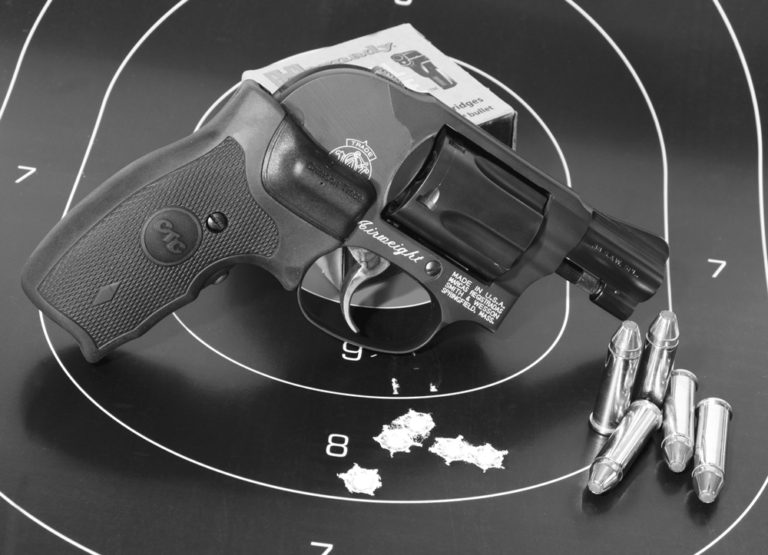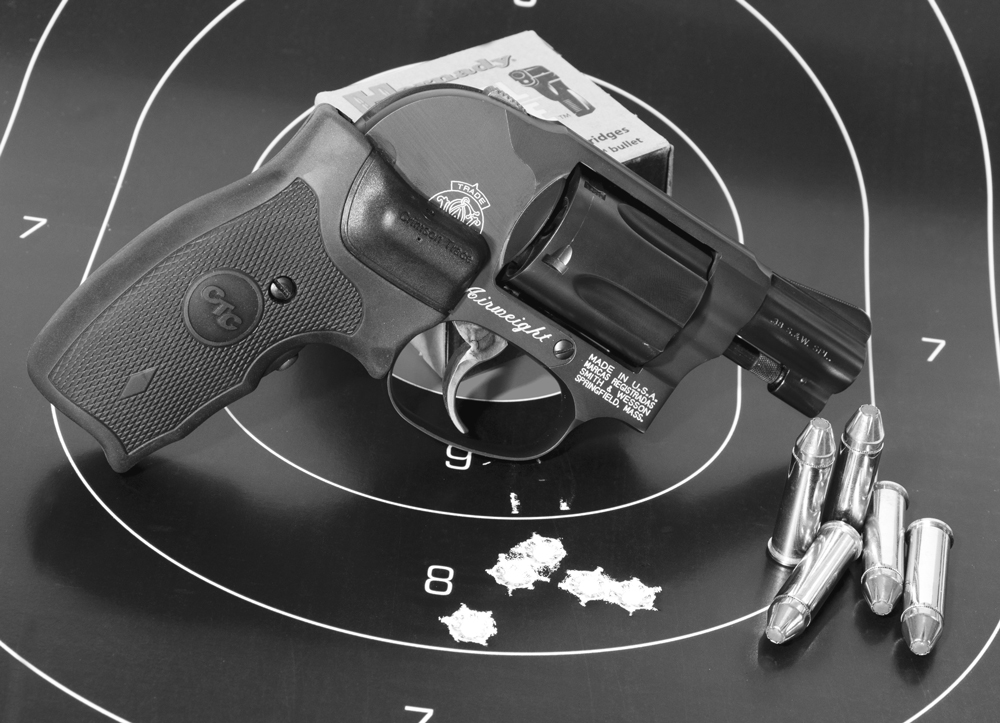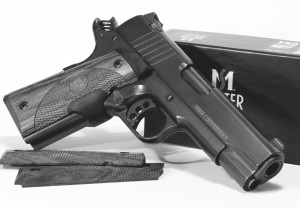

In 1994, Crimson Trace started offering a laser conversion for Glock handguns. It designed this laser to address all the things its inventor’s didn’t like about the handgun lasers currently available, namely it needed to have holster compatibility, had to be absent exposed wires, and had to include precision adjustments. It also needed to be reliable and, well, not ugly, and with minimal bulk. By working with the available space inside the Glock’s frame, Crimson Trace created a laser that mounted to the vertical portion of the trigger guard, with all the wires and the batteries internally housed.
It was, literally, an ingenious creation. This conversion got people’s attention. No longer did a handgun-mounted laser have to turn a handgun into the hunchback of Notre Dame. You simply sent your Glock to Crimson Trace, and one week later the company returned it with the integral laser conversion. Cost? $595. Now, almost 20 years later, there are still about 1,400 of these Crimson Trace-converted Glocks in use and Crimson Trace still services those units.
About a year after the first Crimson Trace Glock laser introduction, the company introduced the laser grip. At that time, most handguns had grip panels, and it was the obvious choice for aftermarket laser attachment, particularly on steel-framed handguns. The first laser grips were for the Beretta 92, the 1911, and the Ruger Mark II. Cost? $395.
A Sound Concept Ready for Primetime

In 1997, things changed with Crimson Trace’s introduction of the laser grip for the S&W J-Frame revolver. The J-Frame was (and is) a very popular handgun for personal protection, because of its small size. For the same reason, and for its reliability, it was also a popular backup gun for police officers. I carried a J-Frame on my ankle for about half my police career. As popular as it was, most found it hard to shoot with any precision. This was because of its almost non-existent sights and the gun’s short sight radius. But now, all of a sudden, with the Crimson Trace laser grip, shooters and old gun writers found they could actually hit stuff with a J-Frame—out as far as 100 yards!
The J-Frame laser grip quickly became a top seller for Crimson Trace, and it finally gave gun writers the confirmation they needed to finally start talking positively about handgun-mounted lasers. The rest, as they say, is history. Lasers for handguns have, today, become the hottest selling aftermarket accessory, and there is hardly a handgun for which you cannot purchase a laser.
Crimson Trace, however, is not leading the handgun laser market because of the quality of their products—don’t get me wrong, the company does offer high-quality stuff—but, more importantly, due to the instinctive/instant activation their products offer. With a Crimson Trace laser grip or Laser Guard, all you have to do to activate the laser is grip the handgun normally. A button, either integral to the grip or extending on an arm from the front of the trigger guard (in the case of the Laser Guard) causes the laser to come on. You don’t have to think about activating the laser, you just need to grip the handgun.
 Editor's Note: There's never been a better time to get a laser sight than right now. Buy the Crimson Trace Rail Master now for just $129.99 and get Handgun Training for Personal Defense—a 240-page training book on concealed carry, lights and lasers—FREE!
Editor's Note: There's never been a better time to get a laser sight than right now. Buy the Crimson Trace Rail Master now for just $129.99 and get Handgun Training for Personal Defense—a 240-page training book on concealed carry, lights and lasers—FREE!

![Best Concealed Carry Guns In 2025 [Field Tested] Wilson Combat EDC X9S 1](https://gundigest.com/wp-content/uploads/Wilson-Combat-EDC-X9S-1-324x160.jpg)


![Best 9mm Carbine: Affordable PCCs [Tested] Ruger Carbine Shooting](https://gundigest.com/wp-content/uploads/Ruger-Carbine-Shooting-100x70.jpg)
![Best AR-15: Top Options Available Today [Field Tested] Harrington and Richardson PSA XM177E2 feature](https://gundigest.com/wp-content/uploads/Harrington-and-Richardson-PSA-XM177E2-feature-100x70.jpg)
